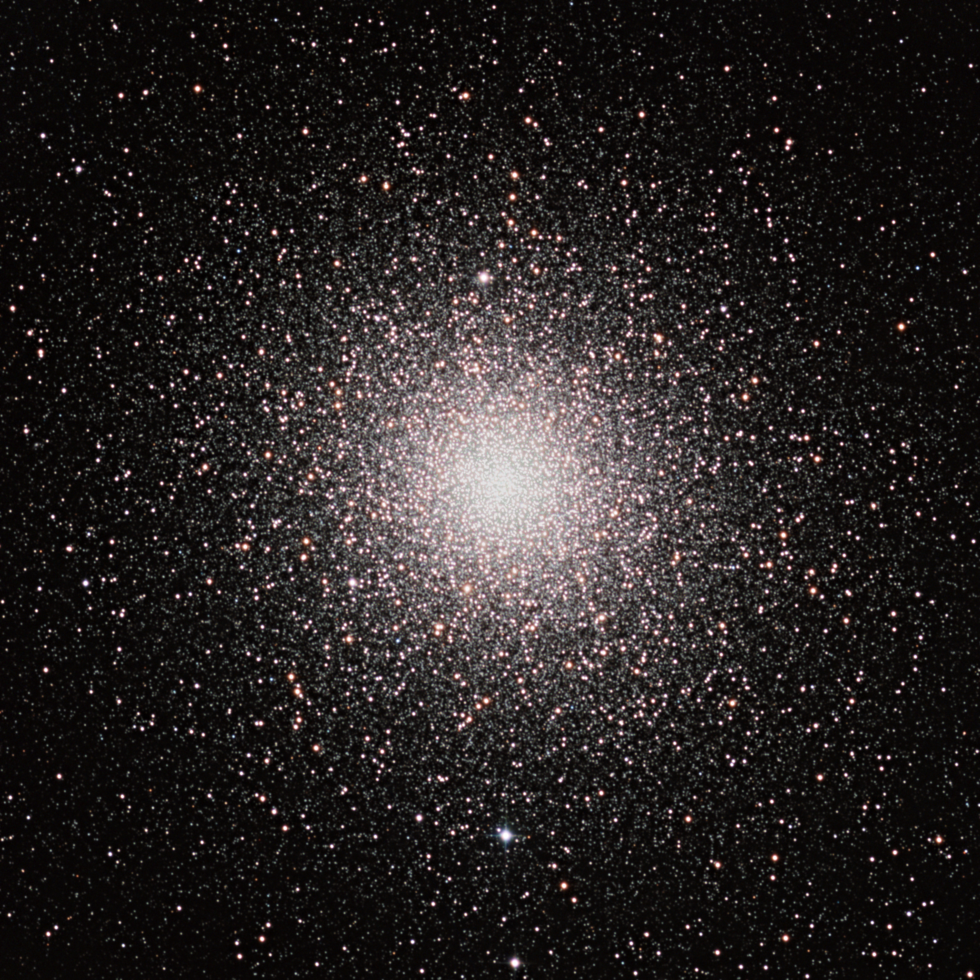47 Tucanae by any other name is NGC 104
47 Tucanae by any other name is NGC 104
Looking at globular cluster NGC 104, or 47 Tucanae. This cluster of stars is found in the constellation of Tucana, The Toucan.
White drawfs, dying stars just the size of Earth, are migrating from the center out toward the outskirts of this cluster - a fact first seen using the Hubble Space Telescope.
Bright, behemoth red giant stars can be seen surrounding the center of the image.
This stellar cluster stretches around 120 light years from side-to-side, more than a quarter-million times further than the distance between Neptune and the Sun.
Containing more than 500,000 stars, NGC 104 is the second-brightest globular cluster in seen in the night sky.
Still, this family of stars was not recognized until 1751, when it was spotted by Nicholas Louis de Lacaille, a French astronomer who named 14 of the 88 modern western constellations.
Found roughly 15,000 light years from Earth, the light seen in this image traveled across space from a time when modern humans became the lone hominin on the planet, the first people (and dogs) crossed the Bering Land Bridge into North America, and the oldest-known image of a stringed musical instrument was painted on a cave wall in France.
Composite image composed of 27 images recorded in red, green, purple, and luminescent frequencies (LRGB) over two hours and 15 minutes on the nights of 14, 16, 17 July 2021, using the 0.6-meter CHI-1 Telescope in Chile from Telescope Live. Processed using Astro Pixel Processor Beta 2 and BeFunky. Two composite images, one accentuating the white dwarfs, and the other warm red stars, were combined into this final image.
Clear skies!
James
White drawfs, dying stars just the size of Earth, are migrating from the center out toward the outskirts of this cluster - a fact first seen using the Hubble Space Telescope.
Bright, behemoth red giant stars can be seen surrounding the center of the image.
This stellar cluster stretches around 120 light years from side-to-side, more than a quarter-million times further than the distance between Neptune and the Sun.
Containing more than 500,000 stars, NGC 104 is the second-brightest globular cluster in seen in the night sky.
Still, this family of stars was not recognized until 1751, when it was spotted by Nicholas Louis de Lacaille, a French astronomer who named 14 of the 88 modern western constellations.
Found roughly 15,000 light years from Earth, the light seen in this image traveled across space from a time when modern humans became the lone hominin on the planet, the first people (and dogs) crossed the Bering Land Bridge into North America, and the oldest-known image of a stringed musical instrument was painted on a cave wall in France.
Composite image composed of 27 images recorded in red, green, purple, and luminescent frequencies (LRGB) over two hours and 15 minutes on the nights of 14, 16, 17 July 2021, using the 0.6-meter CHI-1 Telescope in Chile from Telescope Live. Processed using Astro Pixel Processor Beta 2 and BeFunky. Two composite images, one accentuating the white dwarfs, and the other warm red stars, were combined into this final image.
Clear skies!
James
SPECIFICATIONS
Telescope
CHI-1
Camera
FLI PL 9000
Location
Rio Hurtado Valley, Chile
Date of observation
14,16, 17 August 2021
Filters
LRGB
Processing
LRGB 1
Credits
James Maynard


